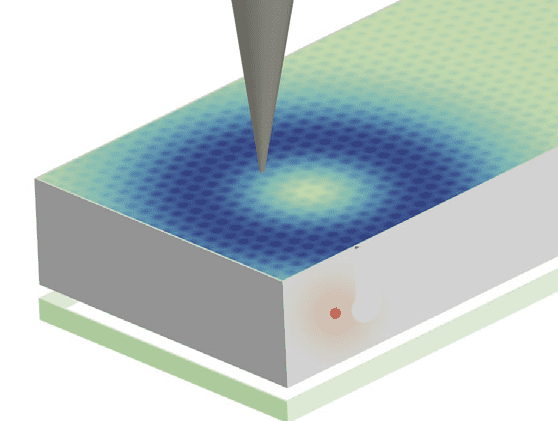
Elusive and exotic quasiparticles called anyons could be detected in graphene using a scanning tunnelling microscope (STM) – according to physicists in the US and UK. If discovered, the anyons could prove useful for creating quantum computers.
An anyon is a hypothetical particle-like collective excitation (or quasiparticle) that is predicted to exist in some 2D materials. These are materials that are so thin that their electrons are effectively confined to move in only two directions.
When two anyons in a quantum system are interchanged, the wavefunction of the system can undergo a phase shift of any angle – hence the name anyon. This is unlike familiar particles like electrons and photons, whereby an interchange results in either no phase shift (for photons and other bosons) or a 180° shift (for electrons and other fermions).
Fractional charge
Anyons are expected to occur in the fractional quantum Hall phase, which occurs in 2D semiconductors that are subjected to strong magnetic fields. Electrical charge in this phase is quantized in fractional units of the electron’s charge, instead of the usual integer units.
In 1984, Dan Arovas, Robert Schrieffer and Frank Wilczek showed that the fractional quantum Hall phase could be explained in terms of anyons being the carriers of fractional charge. Since then, however, physicists have struggled to find direct evidence for the quasiparticles. This is because most 2D systems that could harbour anyons tend to be layers that are embedded deep within much thicker samples, making direct measurements very difficult.
Now, Zlatko Papić of the University of Leeds, Roger Mong at the University of Pittsburgh, and Ali Yazdani, and Michael Zaletel of Princeton University have done calculations and computer simulations that show that anyons should be visible to an STM in graphene.
Being a sheet of carbon just one atom thick, graphene is a quintessentially 2D material. Previous studies of graphene, which is also a semiconductor, have found that it has a fractional quantum Hall phase.
Lattice defects
Papić and colleagues have worked out that anyons should become trapped at small lattice defects in graphene. Writing in Physical Review X, the team shows that an STM can be used to detect the presence of ring-like structures in the electron density of states near such defects. These rings, say Papić and colleagues, would – if observed – be direct evidence for anyons.

From electronics to anyonics
The team also says that the STM technique can distinguish between “Abelian” and “non-Abelian” anyons. This could be useful for creating quantum computers because non-Abelian anyons should be able to store and transmit quantum information for relatively long periods of time.



